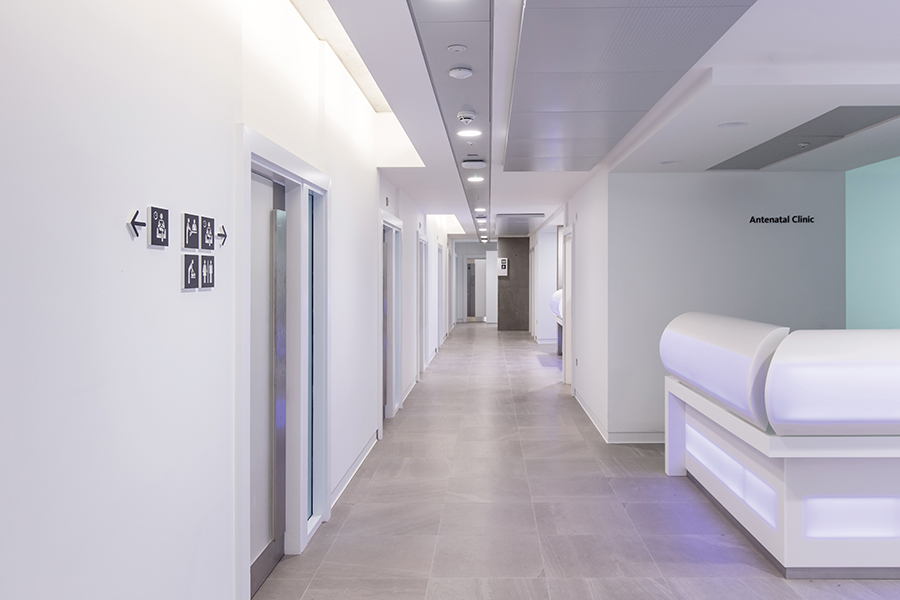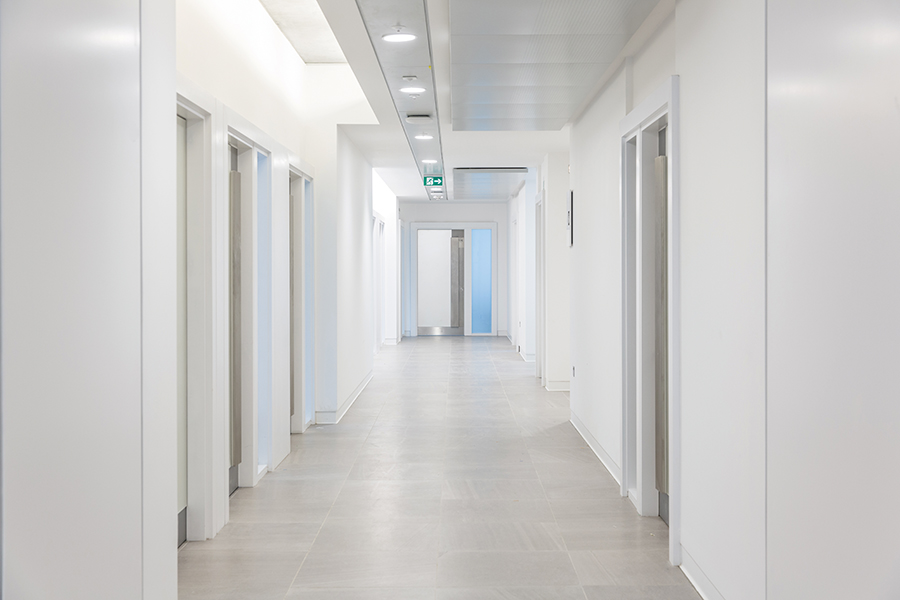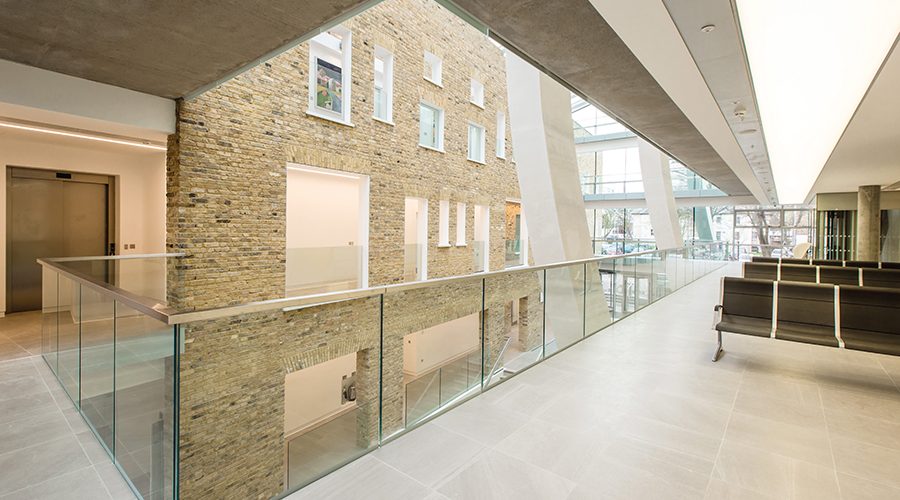Cathal McGuinness, Director at SAS International Ireland, discusses why metal ceilings help in the fight against hospital infection.
SAS International
When you consider that 8.9 million healthcare associated infections (HCAI) occur each year in European hospitals and long-term care facilities, a clean and safe environment is absolutely vital, with infection prevention and control a key consideration. It’s why metal ceiling systems can play a crucial role in minimising the risk of infection and need to be specified in accordance with stringent cleaning procedures and be maintainable for the client.
The first priority for healthcare facilities will always be patients’ well-being. However, healthcare facilities must be safe, accessible and inviting for all, including doctors, staff and visitors. Flooring, walls and ceilings play a crucial role in minimising the risk of transmission of infection.
Prevention and control
As part of the infection prevention requirements within the Code of Practice from The Health and Social Care Act 2008, healthcare providers must demonstrate they are providing and maintaining a clean and appropriate environment which facilitates the prevention and control of healthcare-associated infections (HCAI). This is also one of the main themes with the Department of Health’s HBN:00-10 guidance.
In the healthcare environment, the majority of people have weakened immune systems and other afflictions which make them susceptible to infections, therefore it is the NHS’ responsibility to minimise the potential risk of patients acquiring a healthcare associated infection.
The design and maintenance of a healthcare facility’s internal environment is therefore essential to long term performance. Floors, walls and ceilings must be carefully designed to enable effective cleaning, and all coatings and finishes chosen with this in mind.
Metal ceilings
With their easy-clean polyester paint coatings and guarantees of 25 years, metal ceilings are ideally not damaged by routine and efficient cleaning with normal chemical cleaners. Moreover, the ability to control or inhibit the growth of bacteria has led to the development of anti-bacterial and anti-fungal coatings which are available for different building products across a variety of sectors, particularly healthcare.
Hygienic coatings are preferred as part of a controlled approach to cleaner facilities. Easy-clean coatings that are not damaged by routine and efficient disinfecting chemicals exist, but coatings with active anti-bacterial properties provide extra protection for ceiling finishes. It should be recognised that a ceiling with an anti-bacterial coating has totally different performance criteria to the anti-fungal support claims made by some ceiling manufacturers.
As part of an existing cleaning procedure, anti-bacterial coating effectively inhibits the spread and growth of microorganisms. It’s important to note that when a product has an anti-bacterial coating it will not kill the bacteria, rather prevent the spread of bacteria over the surface of the product.


Minimising the risk
With cleaning programmes in hospitals being reviewed and developed continuously, metal ceilings are already proven to be the most efficient ceiling surface to clean. These surfaces have to be extremely robust and durable, and claims made by some suppliers on the suitability of their products and technical composition of the ceiling for cleaning are varied.
A metal ceiling with an anti-bacterial coating installed in accordance with a ceiling manufacturer’s recommendations can be cleaned regularly to the same standard as a stainless steel worktop. No component in a concealed grid ceiling can be dislodged using normal methods or pressurised cleaning equipment.
Anti-bacterial coatings applied during manufacture effectively prevent the growth of micro-organisms and control potential risk when used in conjunction with routine cleaning procedures. Ease of cleaning is an important factor in the control of infection.
Other non-metal ceiling systems that claim to be cleanable are in fact permeable barriers, which in turn filter the air and its contents such as dirt. If cleaning is attempted the contents of the tile are extracted to the surface.
Accessibility
It is widely recognised that hospitals require seven times more mechanical and electrical services than office buildings. Metal ceiling systems allow services to be housed in the ceiling void; offering a range of different access options ceiling tiles can be easily and frequently removed without damage.
It’s important to remember that a concealed grid ceiling system allows for upward cleaning pressure without dislodging or displacing tiles. When you push against a lay-in tile metal or mineral ceiling system the tiles will lift.
A concealed grid ceiling system that offers a downward demountable solution with a hinge and slide facility to retain the tile within the ceiling plane is a preferred solution within healthcare facilities. The main benefit is that ceiling tiles are not required to be physically removed from the supporting grid and are therefore less susceptible to damage during cleaning and maintenance work.
Maintaining a public space and restricting the spread of numerous infections can be challenging. Healthcare-associated infections are a hidden enemy and a serious risk to patients, staff and visitors, which is why the specification of appropriate products is of paramount importance.
Metal ceiling systems provide specifiers with the quality, finishes and fittings that enable thorough access, cleaning, disinfection and maintenance to take place and play their part in helping to inhibit the potential invisible risk, one of the key priorities within the NHS.






